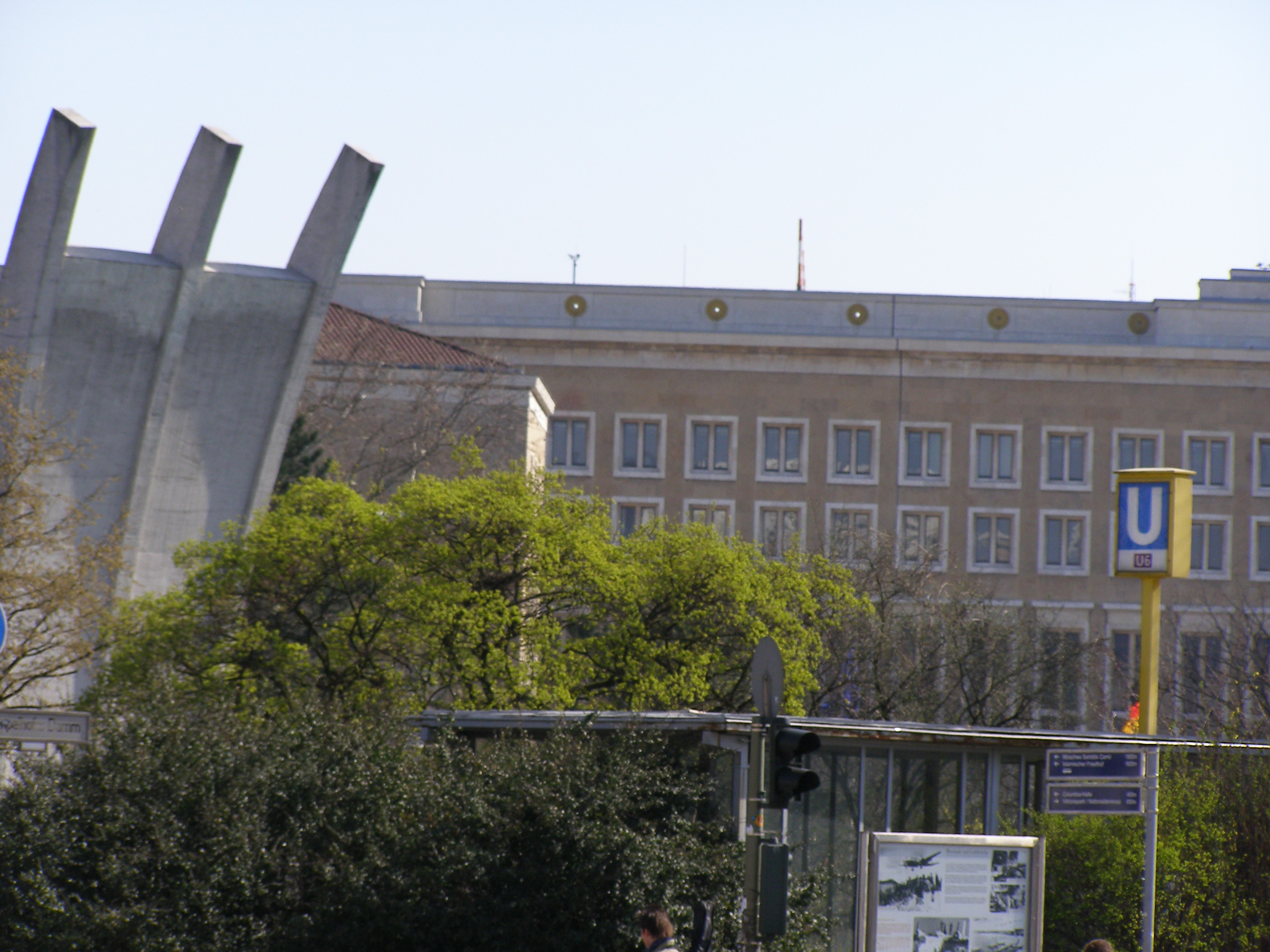Platz Der Luftbrücke (Berlin U-Bahn) on:
[Wikipedia]
[Google]
[Amazon]
 Platz der Luftbrücke is a
Platz der Luftbrücke is a
, Berliner Untergrundbahn.de There are four entrances, one at the north end on Mehringdamm and three on Platz der Luftbrücke.
Bauarbeiten am U-Bahnhof Platz der Luftbrücke beginnen
Berlin.de, 11 May 2020, retrieved 18 April 2022
Map of station and surroundings
 Platz der Luftbrücke is a
Platz der Luftbrücke is a Berlin U-Bahn
The Berlin U-Bahn (; short for , "underground railway") is a rapid transit system in Berlin, the capital and largest city of Germany, and a major part of the city's public transport system. Together with the Berlin S-Bahn, S-Bahn, a network of ...
station
Station may refer to:
Agriculture
* Station (Australian agriculture), a large Australian landholding used for livestock production
* Station (New Zealand agriculture), a large New Zealand farm used for grazing by sheep and cattle
** Cattle statio ...
located on the . It is located under Platz der Luftbrücke
Platz der Luftbrücke is a landmarkedMehringdamm
The Mehringdamm is a street in southern Kreuzberg, Berlin. In the north it starts at Mehringbrücke and ends - with its southernmost houses already belonging to Tempelhof locality - on Platz der Luftbrücke. It is the historical southbound Berl ...
on the border between Kreuzberg
Kreuzberg () is a district of Berlin, Germany. It is part of the Friedrichshain-Kreuzberg borough located south of Berlin-Mitte, Mitte. During the Cold War era, it was one of the poorest areas of West Berlin, but since German reunification in ...
and Tempelhof
Tempelhof () is a locality of Berlin within the borough of Tempelhof-Schöneberg. It is the location of the former Tempelhof Airport, one of the earliest commercial airports in the world. The former airport and surroundings are now a park call ...
, near the former Tempelhof International Airport
Berlin Tempelhof Airport () was one of the first airports in Berlin, Germany. Situated in the south-central Berlin borough of Tempelhof-Schöneberg, the airport ceased operating in 2008 amid controversy, leaving Tegel and Schönefeld as the t ...
, and is now named for the square there with its memorial to the victims of the Berlin Airlift
The Berlin Blockade (24 June 1948 – 12 May 1949) was one of the first major international crises of the Cold War. During the multinational occupation of post–World War II Germany, the Soviet Union blocked the Western Allies' railway, roa ...
.
Station
The station was designed byAlfred Grenander
Alfred Frederik Elias Grenander (26 June 1863 – 14 March 1931) was a Swedish architect, who became one of the most prominent engineers during the first building period of the Berlin U-Bahn network in the early twentieth century.
Biography
Gr ...
. For topographic reasons, it lies unusually deep underground and the station was therefore constructed with an unusually high vault and long platform. Grenander made exceptionally expressive use of the play of light and shadow in the vaulting and its supports. It is one of only 2 Berlin U-Bahn stations with no central columns, the other being Märkisches Museum. It is tiled in grey with black accents.Der Tempelhofer Abzweig der Nord-Süd-Bahn, Berliner Untergrundbahn.de There are four entrances, one at the north end on Mehringdamm and three on Platz der Luftbrücke.
History
The station opened on 14 February 1926 and was then called Kreuzberg (after thehill
A hill is a landform that extends above the surrounding terrain. It often has a distinct summit, and is usually applied to peaks which are above elevation compared to the relative landmass, though not as prominent as Mountain, mountains. Hills ...
which gives the district its name; it is on the edge of the district). Two old wall signs with that name, uncovered in renovation, have been preserved under glass. It was the terminus of Line CII (today U6) until the opening of Paradestraße station on 10 September 1927. The latter was originally called Flughafen (Airport). However, in 1937 that station received its current name and the Kreuzberg station was renamed Flughafen. It had a direct connection to Tempelhof Airport
Berlin Tempelhof Airport () was one of the first airports in Berlin, Germany. Situated in the south-central Berlin borough of Tempelhof-Schöneberg, the airport ceased operating in 2008 amid controversy, leaving Tegel and Schönefeld as the ...
, at that time unique in the world; it remained the connection between the airport and the city's public transport system until the airport closed in October 2008.
In 1975, it was renamed a second time, after the square above, West Berlin
West Berlin ( or , ) was a political enclave which comprised the western part of Berlin from 1948 until 1990, during the Cold War. Although West Berlin lacked any sovereignty and was under military occupation until German reunification in 1 ...
's civil aviation having shifted to Tegel Airport
Berlin Tegel "Otto Lilienthal" Airport () was the primary international airport of Berlin, the capital of Germany. The airport was named after aviation pioneer Otto Lilienthal and was the fourth busiest airport in Germany, with over 24 millio ...
.
The platform was extended in 1971, and in 1990 the station was renovated and re-tiled and a new lift was installed.
In May 2020 extensive renovations began to provide step-free access to the platforms from the street, as part of wider landscaping improvements in the area. The first phase - involving platform renovations is due to be completed in 2021.Berlin.de, 11 May 2020, retrieved 18 April 2022
References
External links
Map of station and surroundings
Berliner Verkehrsbetriebe
The (German: 'Berlin Transport Company') is the main public transport company of Berlin, the capital city of Germany. It manages the city's (underground), trams in Berlin, tram, bus transport in Berlin, bus, replacement services (EV) and fe ...
(pdf)
{{DEFAULTSORT:Platz der Luftbrucke (Berlin U-Bahn)
U6 (Berlin U-Bahn) stations
Buildings and structures in Friedrichshain-Kreuzberg
Buildings and structures in Tempelhof-Schöneberg
Railway stations in Germany opened in 1926